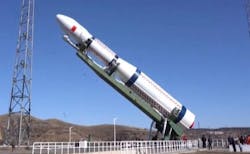6G wireless communications may boost interest in semiconductors composed of new materials and compounds
FRAMINGHAM, Mass. – 6G wide-area wireless barely has a technology roadmap or much name recognition at this early stage, but it is already clear that its electronics implications will be enormous for chip and components makers. Fierce Electronics reports. Continue reading original article
The Military & Aerospace Electronics take:
11 Feb. 2021 -- Semiconductors composed of new materials and compounds will be used in next-generation transmitters and satellites, analysts forecast.
“6G communications may become an even bigger business than the 5G that is now rolling out worldwide,” wrote Raghu Das, CEO of analysts at IDTechEx in a recent note. “For both 5G and 6G, the software, hardware and materials opportunities are enormous. Despite this, only some of the giants are successfully participating.”
He noted that the Chinese launched a communications satellite in November to study 6G physics in the environment of space with terahertz electronics. Terahertz waves would boost transmission speeds many times faster than 5G when engineers and researchers develop effective technology.
Related: What 5G means to the military
John Keller, chief editor
Military & Aerospace Electronics
